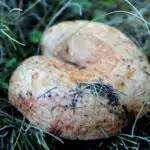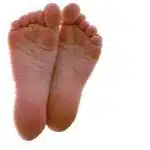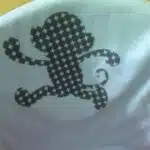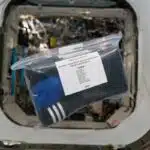Carpet stains are the bane of every homeowner’s existence. Whether it’s a spilled glass of red wine, a muddy paw print from your furry friend, or an accidental drop of nail polish, stains seem to have a way of finding their way onto our carpets. Fortunately, with the right tools and techniques, removing carpet stains can be a relatively easy task.
As a professional in the carpet cleaning industry, I have seen my fair share of stubborn stains. Over the years, I have developed a set of tried-and-true methods for removing even the toughest carpet stains. In this article, I will share with you some of my top tips and tricks for removing stains from carpet so that you can keep your floors looking clean and fresh for years to come. So grab your cleaning supplies and let’s get started!
Understanding The Different Types Of Carpet Stains
Carpet stains can be a nightmare for any homeowner. They can come from a variety of sources, such as food, drinks, pets, and more. Understanding the different types of carpet stains is crucial in effectively removing them.
Food stains are one of the most common types of carpet stains. These include grease, oil, and sauces that can leave a stubborn residue on your carpet fibers. Drinks like coffee, tea, and wine can also leave behind tough-to-remove stains that require immediate attention.
Pet stains are another significant source of concern for homeowners. Urine and feces can quickly penetrate deep into the carpet fibers if not cleaned promptly, leading to unpleasant odors and discoloration. Effective stain removal techniques vary depending on the type of stain you’re dealing with. The key to successful removal is identifying the stain source and using appropriate cleaning supplies.
Transitioning into preparing your cleaning supplies, it’s essential to have the right tools on hand to tackle any carpet stain effectively.
Preparing Your Cleaning Supplies
Understanding the different types of carpet stains is important in determining the right cleaning method to use. Once you have identified the type of stain, it is time to gather the necessary equipment and prepare your cleaning supplies. The key to removing carpet stains is acting quickly and using the right cleaning techniques.
Gathering equipment is an essential step in carpet stain removal. You will need a clean white cloth, a spray bottle, a vacuum cleaner, and a cleaning solution. It is important to choose a cleaning solution that is appropriate for the type of stain you are dealing with. For example, if you are dealing with a wine stain, you can use a mixture of one part vinegar and two parts water.
Cleaning techniques vary depending on the type of stain and the severity of the damage. For fresh spills, blotting up excess liquid should be your first step. Use a clean white cloth to blot up as much liquid as possible without rubbing or scrubbing. If there is still some liquid left, use a spray bottle to apply your cleaning solution onto the affected area and let it sit for several minutes before blotting again.
Blotting up excess liquid is an essential step in removing carpet stains. However, it is important to note that this alone may not be enough to completely remove stubborn stains. In such cases, you may need to repeat the process several times or consider seeking professional help from experienced carpet cleaners. Remember that acting quickly and using appropriate cleaning techniques can help prevent permanent damage to your carpets and ensure they remain in good condition for longer periods of time.
Blotting Up Excess Liquid
Did you know that 85% of carpet stains are caused by liquid spills? That’s why it’s important to know how to properly blot up excess liquid from your carpet. When dealing with a spill, the first step is to grab a clean cloth and gently blot the area. Avoid rubbing or scrubbing the stain, as this can cause it to spread.
If the spill is still wet, you can also try using a vinegar solution to help lift the stain. Mix equal parts white vinegar and water in a spray bottle and apply it to the affected area. Let it sit for 5-10 minutes before blotting it up with a clean cloth. This method works best on fresh stains and can be especially effective on pet urine.
Once you’ve blotted up as much liquid as possible, it’s important to schedule a professional steam cleaning. Even if the stain appears to be gone, there could still be residue left behind that will attract dirt and grime over time. A professional cleaning will not only remove any remaining stains but will also leave your carpets looking and smelling fresh.
The Importance Of Acting Quickly
After blotting up excess liquid from a carpet stain, the next crucial step is to act quickly. The longer you leave a stain on your carpet, the harder it will be to remove it. This is because stains tend to seep deeper into the carpet fibers as they dry. Therefore, acting fast can help prevent permanent damage and save you from costly replacements.
To ensure that you act quickly, always have cleaning supplies readily available for emergency use. This includes mild detergent solutions, white vinegar, and baking soda. When a spill occurs, immediately grab your cleaning supplies and start working on the stain before it sets in. Remember to test any new cleaning solution on an inconspicuous area of your carpet first to avoid damaging it further.
Prevention strategies are also vital in ensuring that you act fast when a spill occurs. For instance, consider placing rugs or mats in high traffic areas of your home to protect your carpets from spills and dirt. Additionally, avoid eating or drinking over carpets or walking with shoes on them as this can introduce dirt and stains onto the carpet fibers.
Markdown list:
- Act quickly when a spill occurs
- Always have cleaning supplies readily available
- Use prevention strategies such as placing rugs or mats in high traffic areas
Transition: With these prevention strategies in mind, let’s now look at how to remove coffee stains from carpets.
Removing Coffee Stains
As the saying goes, “spilled milk cannot be unspilled”. The same can be said for coffee stains on carpets. These stubborn stains can ruin the appearance of a room and leave a lasting reminder of a past spill. However, fear not as there are several methods to successfully remove coffee stains from carpets.
One effective method is to use natural stain removers such as vinegar or baking soda. To remove coffee stains using vinegar, mix equal parts water and white vinegar in a spray bottle and apply it to the affected area. Let it sit for 10-15 minutes before blotting it up with a clean cloth. Baking soda can also be used by creating a paste with water and applying it to the stain. Leave the paste on for 30 minutes before vacuuming it up.
Another common household item that can help remove coffee stains is salt. Salt works by absorbing the liquid in the stain, making it easier to lift out of the carpet fibers. Simply sprinkle salt over the stained area and let it sit for several hours before vacuuming it up. For tougher stains, repeating this process may be necessary.
In addition to removing coffee stains, natural stain removers can also be used for removing tea stains from carpets. By using these natural alternatives, not only are you avoiding harsh chemicals but also saving money on expensive cleaners. However, if all else fails or if you prefer professional assistance, do not hesitate to contact your local carpet cleaning experts for their services.
Transition: Now that we have covered how to successfully remove both coffee and tea stains from carpets using natural remedies, let’s move onto tackling wine stains – another tough stain that commonly plagues carpets.
Tackling Wine Stains
Wine stains on carpets are not only unsightly but can also be challenging to remove. To effectively remove wine stains, you need to act fast and use the right cleaning solution. First, blot the stain with a clean cloth or paper towel to remove as much wine as possible. Avoid rubbing the stain as it can push it deeper into the carpet fibers.
Choosing the right cleaning solution for wine stains is crucial. A mixture of water and vinegar is an effective DIY cleaning solution that can break down the wine’s tannins and lift them from the carpet fibers. You can also use commercial carpet cleaners specially formulated for removing wine stains. It is essential to read the labels carefully and follow the instructions on how to apply them correctly.
Preventing future wine stains requires being proactive in your approach. One way of preventing spills from turning into permanent stains is by treating your carpet with a quality stain-resistant product. Also, avoid drinking red wine near carpets or furniture that you do not want stained. If a spill occurs, act quickly by blotting it immediately using a clean cloth or paper towel.
Transition: Now that we have tackled how to handle wine stains let us dive into eliminating pet stains and odors from carpets.
Eliminating Pet Stains And Odors
Pet stains and odors are common issues that carpet owners face. Pet urine, for example, can be a difficult stain to remove if not attended to immediately. The odor can also linger even after the stain has been removed. One solution to this problem is to use a pet odor removal product that is specifically designed for carpets. These products break down the enzymes in pet urine that cause the odor and help remove the stain.
Another option for removing pet stains and odors is to create your own DIY carpet cleaning solutions using household items such as white vinegar, baking soda, and hydrogen peroxide. Mix equal parts of white vinegar and water in a spray bottle and apply it to the stained area. Allow it to sit for 5-10 minutes before blotting it up with a clean cloth. For tougher stains, sprinkle baking soda over the area first before spraying with the vinegar solution. After the area has dried, vacuum up any remaining residue.
It’s important to note that when dealing with pet stains and odors, immediate action is necessary for effective removal. Waiting too long can make it more difficult to remove both the stain and odor completely. Regularly cleaning your carpets can also prevent future stains from becoming permanent. In the next section, we’ll discuss how to deal with ink stains on carpets which can be another challenging issue homeowners may face when it comes to carpet maintenance.
Dealing With Ink Stains
Picture this: you just finished a long day at work and decide to unwind by catching up on some paperwork. As you’re working, you accidentally knock over your pen, causing it to spill all over your carpet. Ink stains can be a real pain to remove, but with the right techniques and products, it’s possible to conquer them.
Preventing ink stains is the first step in keeping your carpet looking like new. Be sure to use pens and markers that are labeled as “washable” or “non-permanent.” Additionally, avoid leaving pens uncapped for extended periods of time as this increases the likelihood of them leaking onto your carpet. If possible, keep writing utensils in an area away from carpeted floors.
When dealing with ink stains on carpets, it’s important to act fast before they have a chance to set in. The best cleaning products for ink stains include rubbing alcohol, vinegar, and dish soap mixed with warm water. Avoid using bleach or any product containing bleach as this can cause discoloration. Blot the affected area with a clean cloth until the stain is removed and then rinse thoroughly with water.
As we’ve seen, preventing ink stains is key when it comes to maintaining the appearance of your carpet. However, accidents happen and when they do it’s important to take immediate action using the right cleaning products. In the next section, we’ll discuss how to safely remove blood stains from carpets without causing damage or further staining.
Safely Removing Blood Stains
Blood stains on carpets can be a nightmare to remove, but it’s important to act fast and correctly. First aid tips for blood stains include blotting the area with a clean cloth, avoiding rubbing or scrubbing, and using cold water to rinse out the stain. It’s crucial to avoid using hot water as this can set the stain permanently.
One common misconception when it comes to removing blood stains is that using warm water or bleach is effective. However, this is not recommended as it can cause the stain to spread and become more difficult to remove. Instead, try using a solution of 1 part dish soap and 2 parts hydrogen peroxide. Apply this mixture directly onto the stain and let it sit for 5-10 minutes before blotting with a clean cloth.
If the above methods do not work, it may be necessary to seek professional help from a carpet cleaning service. It’s important not to wait too long before addressing blood stains as they can become more stubborn over time. With proper care and attention, your carpet can be restored back to its original condition.
- Tips for preventing blood stains: Consider placing an absorbent mat near entryways or high-traffic areas where spills are more likely to occur.
- Understanding the importance of acting quickly: Blood stains that are left untreated for too long can become permanent.
- The benefits of hiring a professional carpet cleaner: Carpet cleaning services have access to specialized equipment and cleaning solutions that may be more effective in removing stubborn stains.
- The dangers of DIY remedies: Some household products like vinegar or bleach can actually make blood stains worse if used improperly.
Transitioning into banishing grease and oil stains:
While blood stains may seem daunting, grease and oil stains come with their own set of challenges. Fortunately, there are several methods that can effectively remove these types of stains from carpets without causing damage.
Banishing Grease And Oil Stains
Grease and oil stains can be one of the most stubborn and frustrating types of carpet stains to remove. These types of stains are particularly common in areas such as kitchens, garages, or where cars are parked. Fortunately, there are some tips that can help prevent these stains from occurring in the first place.
One of the best ways to avoid grease and oil stains is by being proactive. For example, placing a doormat at your entrance can significantly reduce the amount of dirt brought into your home. Additionally, using protective mats under heavy machinery or vehicles can help prevent oil leaks from damaging your carpets. If you do spill grease or oil on your carpet, it’s important to act quickly before it sets in.
When it comes to cleaning these types of stains, there are a few effective techniques that you can use. One option is to use white vinegar and baking soda. Simply mix equal parts vinegar and water together and apply the solution to the stain. Then sprinkle baking soda on top and let it sit for about 15 minutes before vacuuming up the residue. Another option is to use a dry-cleaning solvent such as rubbing alcohol or mineral spirits. Apply a small amount to a clean cloth and blot until the stain is removed.
Transition sentence: Now that we’ve discussed how to handle grease and oil stains let’s move on to discussing how to eradicate gum and wax stains from your carpets.
Eradicating Gum And Wax Stains
Did you know that gum is the second most common substance to get stuck in carpets after dirt? It’s no wonder that gum and wax stains are some of the most frustrating carpet stains to remove. However, with the right tools and techniques, you can easily remove these stubborn marks from your carpet.
One effective method for removing gum and wax stains is by using ice. Simply place a few ice cubes in a plastic bag and hold it over the stain for several minutes. This will cause the gum or wax to harden, making it easier to scrape off with a dull knife or spoon. Be careful not to damage the fibers of your carpet while scraping.
Another technique for removing gum and wax stains is by using heat. You can do this by placing a clean cloth over the stain and running a hot iron over it for a few seconds. The heat will melt the gum or wax, allowing it to transfer onto the cloth. Repeat this process until all of the stain has been removed.
Removing gum and wax stains from your carpet can be quite challenging, but with these methods, you’ll be able to do so quickly and efficiently. In the next section, we will discuss how to handle rust stains on your carpet without causing further damage.
Handling Rust Stains
Having successfully tackled gum and wax stains, let us move on to another common carpet nuisance: rust stains. Rust stains are often caused by metal objects that have been left on the carpet for an extended period of time, causing a chemical reaction between the metal and the carpet fibers. These stains can be unsightly and difficult to remove, but with the right tools and techniques, they can be eradicated.
To begin removing rust stains from your carpet, you will need a few supplies. First, you will need a rust stain remover solution. You can purchase commercial rust removers or make your own by mixing equal parts lemon juice and salt into a paste. Additionally, you will need a clean cloth or sponge, some warm water, and a vacuum cleaner. Begin by applying the rust remover solution to the affected area and allowing it to sit for several minutes. Then, using your cloth or sponge and warm water, gently scrub the area until the stain is lifted. Finally, use your vacuum cleaner to remove any excess moisture.
Once you have removed the rust stain from your carpet, it is important to take steps to prevent it from forming again in the future. One way to do this is by removing any metal objects from your carpeted areas as soon as possible after they are dropped or spilled. Additionally, consider placing coasters or mats under metal furniture legs to prevent them from coming into direct contact with your carpets. By taking these preventative measures, you can keep your carpets looking their best for years to come.
Moving forward into our next topic of discussion: getting rid of food and beverage stains on carpets.
Getting Rid Of Food And Beverage Stains
Coffee stains on carpets can be treated by blotting up the spill with a clean cloth, followed by application of a cleaning solution of one part white vinegar mixed with one part water. Ketchup stains can be removed by blotting the stain with a clean cloth and then applying a cleaning solution of one teaspoon of dish-washing liquid mixed with one cup of warm water. Juice spills should be treated by first blotting up the spill with a clean cloth and then applying a cleaning solution of one part white vinegar mixed with two parts water. For tougher stains, an enzyme-based cleaner may be necessary. It is important to remember to never use a scrubbing motion when cleaning carpet stains, as this may damage the fibers of the carpet. Finally, it is important to rinse the area with cold water after the cleaning solution has been applied.
Removing Coffee Stains
Coffee stains on carpet can be a frustrating sight to behold, especially if it is on a light-colored surface. The sight of the stain can evoke feelings of annoyance and distress in homeowners who want their carpets to look clean and pristine at all times. Fortunately, there are several methods for removing coffee stains from carpets.
One effective method is using a vinegar solution. This involves mixing equal parts white vinegar and water and applying it to the stained area with a cloth or sponge. After allowing it to sit for several minutes, blot the area with a clean cloth until the stain lifts. Another option is an enzymatic cleaner, which breaks down the proteins in coffee stains. Apply the cleaner directly to the stain, let it sit for 15-20 minutes, then blot dry with a clean cloth.
When deciding between steam cleaning vs. dry cleaning for coffee stains, it’s important to consider the type of carpet you have and how deeply set the stain is. Steam cleaning uses hot water extraction to remove dirt and stains from carpets, making it more effective for deeper, more stubborn stains. Dry cleaning, on the other hand, uses chemicals to break down dirt and stains without saturating the carpet fibers with moisture. Ultimately, choosing which method to use will depend on your specific situation.
In conclusion, removing coffee stains from carpets requires patience and persistence but can be achieved with proper techniques such as using vinegar solutions or enzymatic cleaners. When deciding between steam cleaning vs. dry cleaning for coffee stains, weigh your options carefully based on your specific needs and preferences before making a decision. By taking these steps, you can restore your carpet’s appearance and keep it looking fresh and clean for years to come.
Treating Ketchup Stains
As a professional carpet cleaner, it’s important to know how to effectively remove food and beverage stains from carpets. One common culprit is ketchup, which can leave a bright red mark on your otherwise clean carpet. Fortunately, there are several methods for treating ketchup stains that can be done with simple household items.
One effective method for removing ketchup stains is by using vinegar. Simply mix equal parts white vinegar and water and apply the solution to the stain with a cloth or sponge. Allow it to sit for several minutes before blotting the area with a clean cloth until the stain lifts. For tougher stains, pre-treating with a mixture of baking soda and hydrogen peroxide can also be effective.
Before applying any cleaning solution, it’s important to pre-treat the stained area by removing any excess ketchup with a spoon or knife. Then, blot the area gently with a clean cloth to remove as much moisture as possible before applying any cleaning solution. By taking these steps and using the right techniques, you can effectively remove ketchup stains from your carpets and keep them looking fresh and clean for years to come.
Cleaning Juice Spills
As a professional carpet cleaner, it’s essential to know how to effectively remove various food and beverage stains from carpets. Another common culprit is juice spills, which can leave a sticky and colorful residue on your carpet. Fortunately, there are several methods for treating juice stains that can be done with simple household items.
One effective method for removing juice stains is by using vinegar. Vinegar is a natural cleaning agent that can break down the sugar in the juice and lift the stain. Simply mix equal parts white vinegar and water and apply the solution to the stain with a cloth or sponge. Allow it to sit for several minutes before blotting the area with a clean cloth until the stain lifts. For tougher stains, pre-treating with a mixture of baking soda and vinegar can also be effective.
To prevent future spills from becoming permanent stains on your carpet, it’s crucial to act quickly when accidents happen. As soon as you notice a spill, use a clean cloth or paper towel to blot up as much moisture as possible before applying any cleaning solution. Avoid rubbing or scrubbing the area, as this can push the liquid deeper into the fibers of your carpet and make it more difficult to remove.
By taking these steps and using the right techniques, you can effectively remove juice stains from your carpets and keep them looking fresh and clean for years to come. Remember to always test any cleaning solution on an inconspicuous area of your carpet before applying it to larger stains or spills. With proper care and maintenance, your carpets will continue to look their best for many years ahead!
Deep Cleaning Your Carpet
When it comes to carpet cleaning, deep cleaning is essential. Regular vacuuming and spot cleaning can only do so much, especially when dealing with stubborn stains. Carpet steam cleaning is a highly effective method for removing dirt, dust, and stains from your carpet fibers. This process involves using hot water and specialized equipment to penetrate deep into the carpet fibers and extract dirt and grime.
DIY carpet cleaning solutions can also be effective for deep cleaning your carpets. However, it’s important to use caution when using these solutions as some may cause discoloration or damage to your carpet fibers. Always test any solution on a small, inconspicuous area of your carpet before applying it to larger areas. Additionally, make sure you follow the manufacturer’s instructions carefully to ensure optimal results.
Regular deep cleaning is essential for maintaining the cleanliness and longevity of your carpets. However, preventing future stains is equally important. Carpet protectors provide an extra layer of protection against spills and stains by creating a barrier between the carpet fibers and potential stains. Applying a carpet protector after deep cleaning your carpets can help keep them looking clean and stain-free for longer periods of time.
Preventing Future Stains With Carpet Protectors
Picture this: your carpet looks brand new after a thorough cleaning. But how long will it stay that way? Constant foot traffic, spills, and accidents can quickly turn your beautiful carpet into a stained mess. That’s where carpet protectors come in. By applying the right product, you can prevent future stains and extend the life of your carpet.
Applying protectors is a simple process that can be done by anyone. First, choose the right product for your carpet type and needs. There are many options available on the market, from water-based to solvent-based protectors. You can also choose between temporary or permanent protectors depending on your preferences. Once you have selected the appropriate protector, apply it evenly across your carpet using a sprayer or roller. Make sure to follow the instructions carefully and allow sufficient time for drying.
Choosing the right product is crucial for effective stain prevention. Consider factors such as durability, ease of application, and compatibility with your carpet material before making a purchase. Some products may leave residues that attract dirt and grime instead of protecting against them. To avoid this, do some research and consult with a professional if necessary. With proper selection and application of protectors, you can keep your carpets looking clean and fresh for years to come.
Remember, prevention is always better than cure when it comes to maintaining the appearance of your carpets. Applying protectors is an easy yet effective way to safeguard against future stains and spills. By choosing the right product and following proper application techniques, you can enjoy clean carpets without worrying about constant upkeep or replacement costs.
Conclusion
Carpet stains are an inevitable part of life. It is essential to know how to remove them effectively and efficiently to maintain the beauty of your carpet. Understanding the different types of carpet stains is crucial in identifying the appropriate cleaning method and supplies needed.
Before starting, prepare your cleaning supplies, including a clean cloth or sponge, white vinegar, baking soda, and dishwashing detergent. Blot up excess liquid from the stain using a paper towel or cloth. Remember to act quickly as this can prevent further staining.
Removing coffee stains requires a mixture of vinegar and dishwashing detergent. Rust stains can be challenging to remove but can be done by using lemon juice mixed with salt. Food and beverage stains can be removed with a solution of water and baking soda.
Deep cleaning your carpet is necessary after removing stubborn stains. You may opt for professional cleaning services or do it yourself using a steam cleaner filled with hot water and detergent.
Preventing future carpet stains can be done by applying carpet protectors that repel spills and dirt. In conclusion, knowing how to remove carpet stains is essential for maintaining the beauty of your carpets. Act quickly, use the appropriate cleaning method, and always have cleaning supplies on hand to ensure you are always ready for any stain emergency that comes your way. Remember that prevention is better than cure; apply carpet protectors to prevent future staining incidents from occurring on your beautiful floors! As Benjamin Franklin once said: “An ounce of prevention is worth a pound of cure.”
Image Credits
- “how to remove coffee stains from carpet (Credit to https://coffee-rank.com)” by coffee-rank (featured)





























